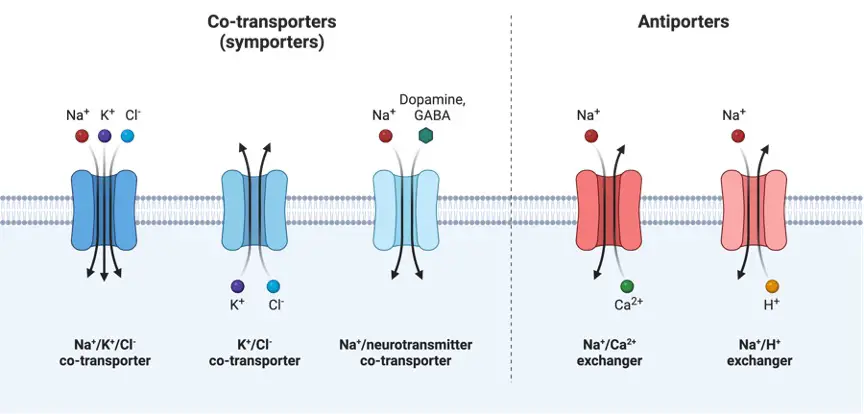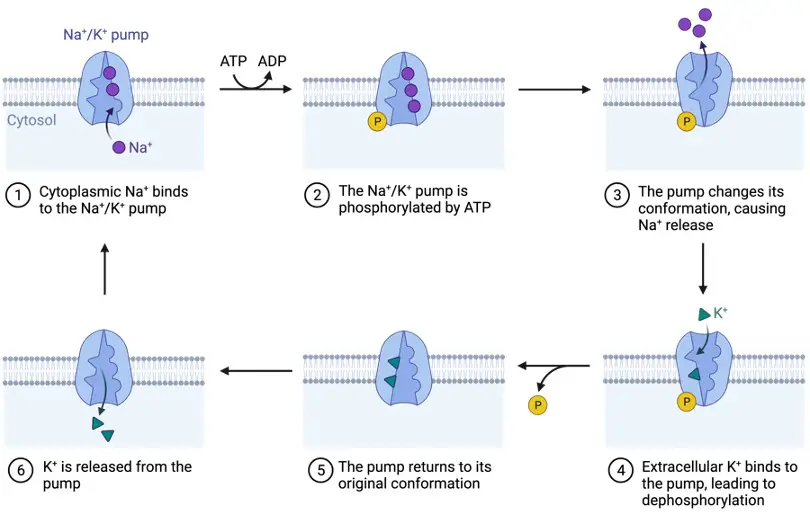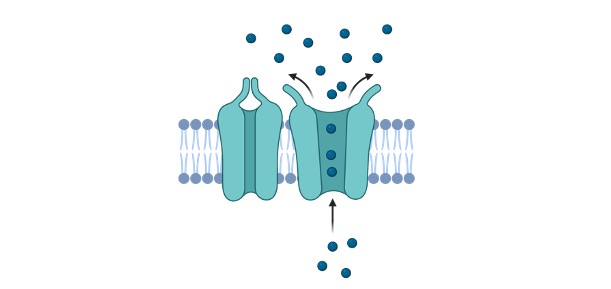Table of Contents
Cellular Transport Definition
Transport means through which ions or other molecules move via blood or how they cross the semi-permeable membrane. Broadly transport is of 2 kinds: passive and active transport, depending on the energy expenditure. In passive transport, the molecules follow the concentration gradient.
Passive transport comprises facilitated diffusion, diffusion, osmosis, and filtration. Whereas in the case of Active transport, the ions move against the gradient utilizing energy. The ions here move, to a region where their concentration is already high using various channels or carriers.
What is Cellular Transport?
Transport refers to the movement of certain substances to a different position. This term can also refer to the action of moving, carrying, or conveying substances to a different place. Transport in biology involves a biological membrane through which different substances, molecules, and ions are moved. It may also refer to the transport of electrons in the ETC for the synthesis of energy in form of ATP.
A concentration gradient is essential for passive transport that also guides the direction of molecules. Substances can be transported along or against the concentration gradient. Transport also involves the transportation of various substances through a circulatory fluid like blood.
Cellular Transport Etymology
The transport term is derived from Old French transporter, Middle English, meaning “convey across”. The term trans- originated from Latin transporto, meaning “across” and the term porto, meaning “to carry”.
Cellular Transport
Hydrophilic molecules that are easily soluble in water usually are transported along the gradient through the membrane utilizing a channel as seen in the case of facilitated diffusion. Lipid-soluble molecules can easily cross the membrane as they are hydrophobic and the membrane consists of lipid bilayers. An example of active transport is the movement of sodium ions across coupled with ATP across a membrane.

A cell needs to maintain homeostasis and needs to regulate the movement of ions or molecules through it. It also requires the import of certain molecules or ions needed for its metabolic functions and also needs to get rid of metabolic waste products formed. Transport also occurs within the cell, between different organelles usually in the form of vesicles.
An example of intracellular transport is the transport of proteins from ER to Golgi bodies where they would be processed and packaged. Similarly, transport can involve import or export from extracellular space to the cell. The cell can be involved in the secretion of proteins or autocrine factors.
Certain substances that are small and hydrophilic can easily cross the membrane. Molecules that are large and non-polar or polar cannot easily enter a cell due to their polarity and size. They would require membrane proteins to aid them in their transport. This transport can be active or passive at the cellular level. Both these types require a pre-existing concentration gradient.
They can be distinguished based on the need for energy and the direction of transport with respect to the gradient. In passive transport, the substances are moved from a region of high concentration to low concentration following the concentration gradient. Whereas in active transport the movement occurs in opposite direction and against the concentration gradient.

Passive transport involves downhill movement, due to which only kinetic energy is required and no additional energy is needed. Whereas in active transport uphill movement is involved and as a result greater energy is required that is provided in the form of chemical energy via ATP. ATP can be generated through the complete oxidation of food and involves pathways like glycolysis and Kreb’s cycle.
Passive transport vs Active transport
In passive transport, downhill movement is involved and the transportation occurs along a concentration gradient. As it is a downhill movement it does not require ATP. There are 4 types of passive transport: filtration, osmosis, facilitated, and simple diffusion.
Transporters like protein carriers may or may not be involved. The common transporters involve aquaporins, ion channels, and glucose transporters. Some examples of passive diffusion include the diffusion of gases, facilitated diffusion of water via aquaporins, and facilitated diffusion of polar molecules and ions.
Active transport is uphill and occurs against a concentration gradient. It requires energy in form of ATP coupled to transport. It has 2 types that are primary and secondary active transport. Here channels and carriers are pre-requisite for transportation.
Primary transporters include ATPases, Ion channels, and Ion pumps. Secondary transporters include Symporters and Antiporters. Examples of primary active transport include the formation of a proton gradient by utilizing redox energy in the inner mitochondrial membrane and the transportation of sodium and potassium facilitated by a sodium-potassium pump.
Examples of secondary transport include coupling the active transport of one substance with the downhill transport of another.
Transport at Tissue Level
Transport also occurs at the tissue level through which different substances are transported to different regions of the body by a circulatory fluid like blood. Blood in higher organisms transports different substances like hormones, gases like oxygen bound to hemoglobin, nutrients, and other signaling factors.
In the case of plants, vascular vessels like the xylem and phloem help in the transport of various substances at the tissue level. The xylem tissue transports water from roots to other regions via osmosis, while phloem tissues conduct photosynthetic materials.







